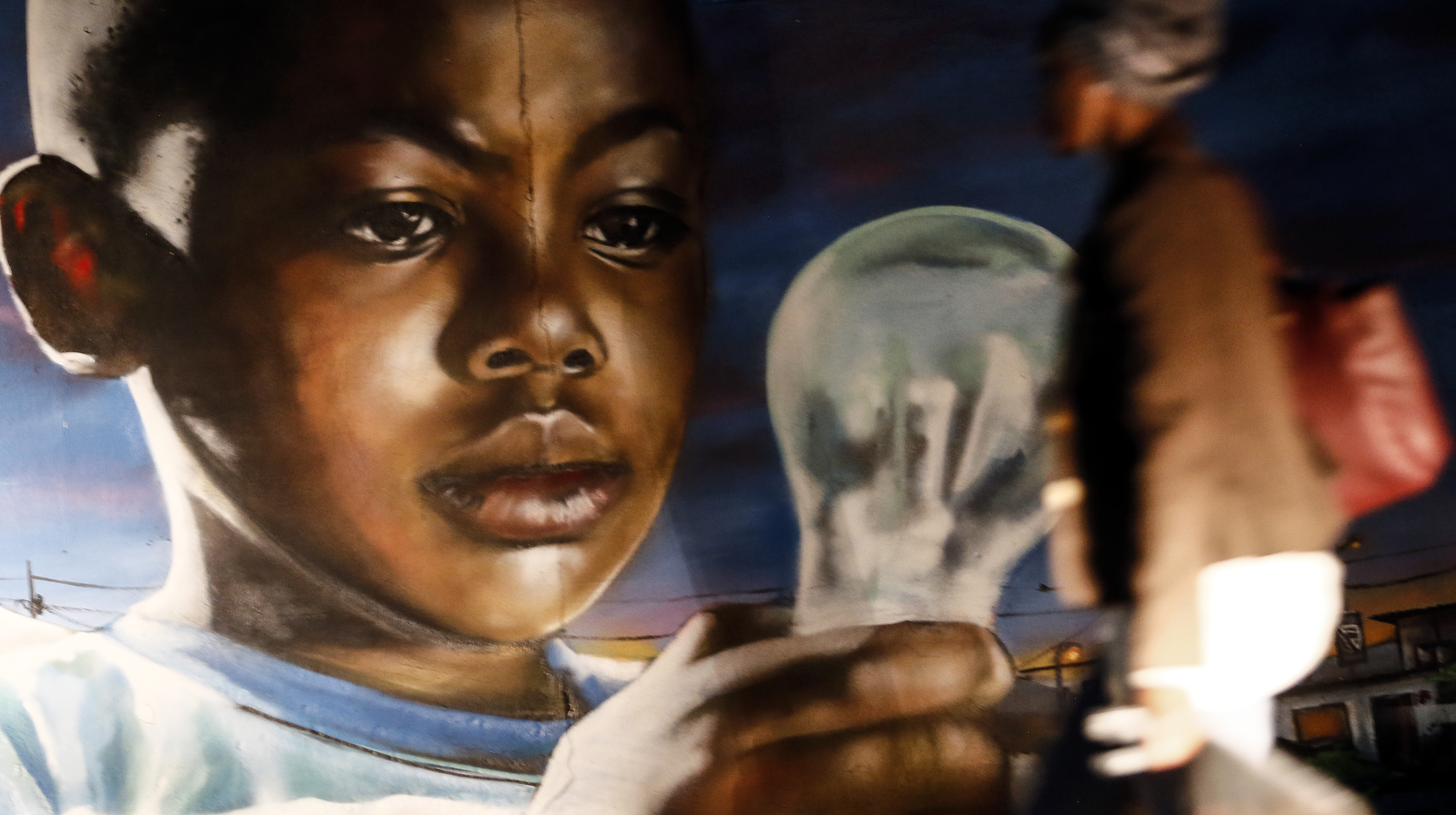May 2023 is set for 27 days of rolling blackouts of at least Stage 3, according to Eskom documents, while the power utility’s weekly outlook for the year from 12 September 2022 is just week after week of red.
That outlook, headlined “Likely risk scenario”, means rotational power outages are just about a given. The exceptions marked in amber are the Christmas and New Year weeks, and, curiously, also the week of 11 September 2023, indicating a somewhat lower risk.
This helps explain why, after having considered implementing permanent Stage 2 rolling blackouts, according to Eskom’s briefing on Sunday, the power utility decided to can that. It wouldn’t have made a difference, according to Eskom CEO André de Ruyter.
“We don’t think that if we have, for example, Stage 2 load shedding on a continuous basis that this will buy us significant additional headroom [for maintenance and such]”.
Put differently, the system is so broken that not even permanent Stage 2 rolling blackouts would have an ameliorating impact.
It’s the state of affairs after years and years of delaying required maintenance, and the hard running of ageing coal power stations since 2008 when the political line was “Keeping the lights on”.
All this means no knight in shining armour or pretty optics orchestrated by the Presidency will provide a solution.
The planning puzzle yet to be mastered
Planning cycles to bring online new capacity run over at least 18 to 24 months. Few people, if any, will argue differently. It’s a planning pipeline that requires everyone to do their bit — from Eskom, which falls under the Department of Public Enterprises, to the independent power producers office, which falls under the Department of Mineral Resources and Energy, and everyone in between, including the Cabinet.
If delays happen in, say, the approval of independent power producers (IPPs) projects, as happened in the 2014 Bid Window 4 and the 2021 Bid Window 5, then on-grid new power is delayed. Bid Window 5 is expected to deliver 2,600MW in early 2024, while a step towards Bid Window 6’s 5,200MW is unfolding.
If further delays, or complications over pricing, arise between the legal and commercial close of projects, the additional power remains on paper, not in the grid.
Another spanner in the wheel, or perhaps bolt in a Koeberg turbine, is when procurement ends up under a cloud — or in court — as happened with the Karpowership emergency power deal of a couple of years ago.
Already about two years behind schedule, those emergency 1,220MW remain stranded. To date, only some 150MW have been added to the grid.
That Eskom on Sunday could announce the urgent procurement of at least 1,000MW was possible because “approval processes were already in progress”, according to the power utility’s emailed reply to a request for comment.
The standard offer programme — simply put, Eskom buys available power at a set rate from existing IPPs — was already at the National Electricity Regulator of South Africa (Nersa). “The other two programmes were approved by Eskom’s board last week,” according to that written response.
Exactly why it took Stage 6 rotational power cuts for this to emerge is unclear — unless it was the scramble to find a PR moment styled as an action step.
The governance conundrum
Smoothing out governing ANC political contestation and diverging interests in the Cabinet meant a swathe of interministerial committees, task teams and such. But getting everyone to clear diaries, and agree, stalled governance into paralysis, particularly in an ANC elective conference year, and ahead of the country’s election year in 2024.
Add a dash of short-termism — often with an eye on an election, in the ANC or South Africa — and it’s more about the PR moment and the pretty optics.
On Eskom, Deputy President David “DD” Mabuza chairs a political task team, while President Cyril Ramaphosa in December 2018 appointed a sustainability task team. A National Energy Crisis Committee (Necom) came into existence in July.
The absence over the past 15 years of a stable electricity supply increasing in line with South Africa’s needs should have focused everyone’s mind. Particularly in the wake of a large measure of continuity — while then deputy president Cyril Ramaphosa was put in charge of the Eskom war room for a while from December 2014.
Then, the government had a five-point plan to address energy shortages within three years.
Visit Daily Maverick's home page for more news, analysis and investigations
“These interventions are premised on ensuring that Eskom creates a space to improve plant reliability, Eskom will participate in building new capacity through projects in gas, coal, regional projects and independent power producers.”
But the war room was closed fairly quickly as it was ineffective because, as Ramaphosa put it during a March 2019 presidential Q&A session in the House, there were “too many entry points to Eskom”. Instead, he asked then-president Jacob Zuma to close the war room and appoint a CEO.
That was Brian Molefe, who came from Transnet, in late 2015. And Eskom’s place at the heart of State Capture and the looting of public money for private enrichment emerged then in media reports, and in a parliamentary inquiry — and more recently, testimony to and findings of the State Capture commission.
The year 2022 has been the worst yet, with 91 days of rotational power cuts already, and the year not done.
The energy availability factor has also plummeted — down to 56.69% now, according to Eskom documents. It stood at 61.79% in 2021. At the same time, the unplanned outage factor is up to 28.98% in 2022, from 24.53% in 2021, signalling an acceleration of unexpected plant breakdowns.
The 2022 budget for diesel, R7.7-billion, is blown as open gas turbines are being kept online to stave off even higher stages of rolling blackouts. On Sunday, De Ruyter said the power utility’s chief financial officer had allocated another R500-million.
More money for Eskom?
It’ll be all eyes on the Medium-Term Budget Policy Statement in late October to see if the power utility will get further support. In the 2019 Budget, some fleet footwork with numbers meant Eskom got an amortised R250-billion in annual instalments over the following decade.
In South Africa’s strained political economy, more money for Eskom will be unpopular, particularly against the backdrop of tariff increases of some 300% over the past decade, leaving consumers digging deep into their pockets.
On Wednesday, the Cabinet met over the rolling blackouts, Eskom capacity and progress by the National Energy Crisis Committee.
“Cabinet remains committed to resolving the issue of energy security and the country, and welcomes the concerted efforts being made by government and stakeholders to find a permanent solution to end load shedding,” said Cabinet spokesperson Phumla Williams.
But it’s not as if the deteriorating situation was not known. Or that Eskom’s state of breakdown isn’t known. The power utility has been quite transparent — in meetings with MPs, public briefings and on its website.
Wednesday’s Cabinet deliberations came eight weeks after Ramaphosa pledged action in a televised speech to South Africa on 25 July, in the wake of debilitating rotational power cuts then.
‘Bold action’
“The crisis that we are facing requires that we should take bold, courageous and decisive action to close the electricity gap,” said the President.
The actions ranged from improving Eskom’s power stations’ performance (which has become worse) and the accelerated procurement of further capacity, of which Eskom’s purchasing plans announced on Sunday and Bid Window 6 are examples.
They also included investment in private generation — embedded power licencing red tape has been cut completely on the back of preparatory work by Operation Vulindlela — while businesses and households would be enabled to invest in rooftop solar.
Ramaphosa, on that day, also talked of “fundamentally transforming the electricity sector and positioning it for future sustainability”, without giving details.
On 1 August, ministers whose departments are part of the National Energy Crisis Committee briefed Parliament on the so-called presidential intervention plan.
“Load shedding is the single biggest constraint on South Africa’s economic growth. Government is taking bold steps both to address the immediate crisis and to make load shedding a thing of the past,” said the official statement. “Further, we are mobilising all of the resources at our disposal and will do whatever it takes to achieve energy security.”
Some eight weeks later, Stage 6 rotational power outages battered South Africa’s political economy. Again. Belying politicians’ talk and PR optics.
Add a securocrat twist to governance decision-making
Eskom contributes to NatJoints (National Joint Operational and Intelligence Structure) that brings together spooks, the SA Police Service and soldiers in a structure that’s not established in law or regulation, and which is not publicly accountable.
NatJoints was drawn into the heart of governance during the Covid-19 two-year lockdown as part of the National Coronavirus Command Council. It has stayed.
While Eskom was “not necessarily briefing NatJoints every week”, according to a written response to a request for comment, it contributed “by providing the required information to assist the [NatJoints] work streams” and to highlight areas of support the power utility needed to solve the crisis.
“Eskom does not see this as reporting, but as an opportunity to unlock bottlenecks/challenges that would otherwise take a lot of time to address through formal processes.”
As various government departments are also part of these work streams, such an approach “enables faster alignment on actions that must be taken in the best interest of the company”.
Aside from the role of soldiers, spooks and cops in the national power utility, more is at play.
Issues include Eskom’s demand for a 32% tariff increase from a regulator it has taken to court, to the manoeuvring over the just transition, or decommissioning of coal power plants in a way that does not negatively affect workers and surrounding communities.
But amid politicians’ verbiage and search for pretty optics, the reality is this: South Africa misses between 4,000MW to 6,000MW. Right now.
And with planning pipelines taking between 18 to 24 months, that means rotational power cuts are set to continue — for at least the next year, or even longer, at a rate that on Eskom’s own modelling, shows no let-up.
No knight in shining armour, strongman politician or pretty words will change that. Calling out ministers, the President and Eskom management might. Doing the hard work and maintaining public scrutiny, will. DM





